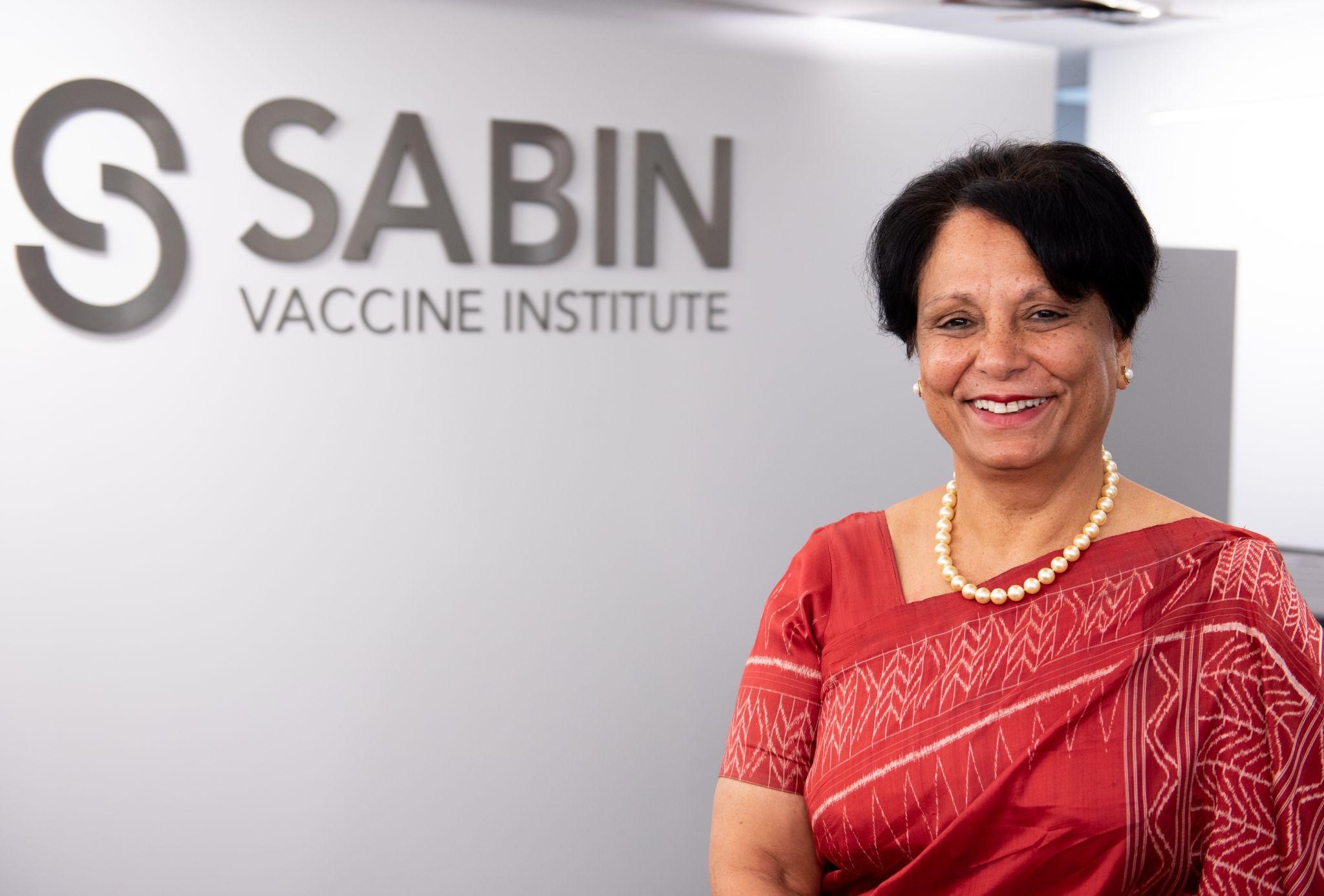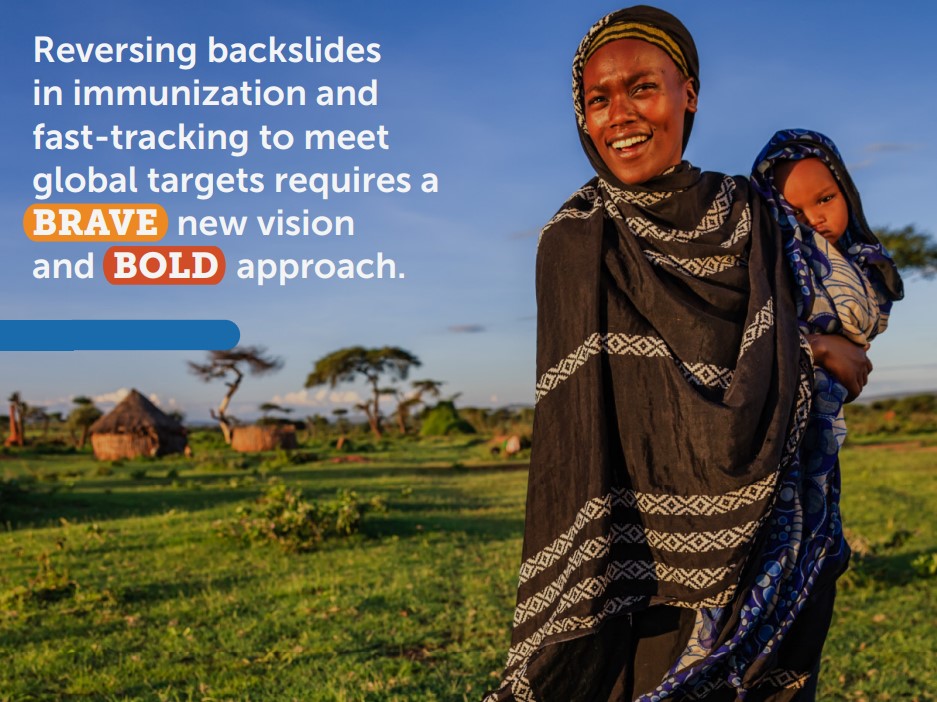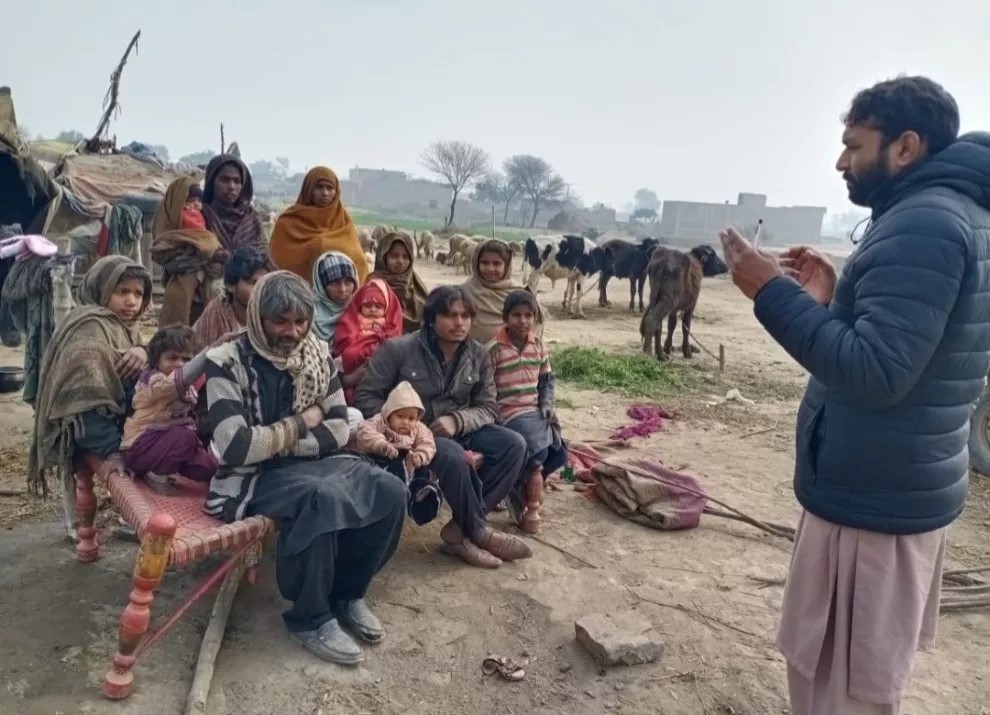Diphtheria, measles, polio, cholera. The indirect impact of disruption to immunisation services due to the COVID-19 pandemic continues to be felt in countries with the lowest vaccination rates. Millions of children have missed out on vaccines, with some ‒ zero-dose children ‒ receiving none of their recommended jabs.
The situation is ‘grim’, according to Anuradha Gupta, President of Global Immunization at the Sabin Vaccine Institute, and previously Deputy CEO at Gavi, the vaccine alliance. She says outbreaks of multiple diseases are taking a toll around the world, putting children at risk of illness now and in the future.
In a wide-ranging interview to mark World Immunization Week (24-30 April), Gupta discusses the impact of COVID-19 on routine immunisation ‒ and how to get back on track.

You have expressed concern about backsliding in routine childhood immunisation programmes. What is the current situation?
The situation is grim. We are seeing large, disruptive outbreaks of multiple diseases: diphtheria, measles, vaccine-derived polio and cholera in several countries. That is an indication that the pockets of ‘zero-dose children’ are growing and that the COVID-19 pandemic has taken a heavy toll.
Countries that are home to nearly 40% of the world’s children were still ramping up their COVID-19 vaccination rollouts in 2022, which impacted not only immunisation coverage but also slowed down vaccine introductions.
HPV is an important case in point ‒ countries with 60% of the cervical cancer burden are yet to introduce this vaccine, and those that have introduced it are struggling to achieve high coverage. More than 85% of young girls remain unprotected despite the fact that the vaccine is highly effective in preventing HPV infections.

How can this be reversed? What is Sabin doing?
Given where we are, we need a radical rethink ‒ maintaining the status quo is not an option. At Sabin, we have launched a BRAVE and BOLD approach aimed at boosting immunisation by amplifying the involvement of communities, women, professionals and changemakers closest to vaccine delivery.
Innovation is always driven by a quest to address that one key service gap. In urban areas, this led to changing the timing of immunisation sessions to late evenings to enable working mothers to bring their children for vaccination. In refugee camps, it led to co-delivering food and vaccination. In Uganda, it was the infusion of additional funds to bolster outreach immunisation services for populations who would have been missed during the pandemic related lockdowns.
We saw a global spike in vaccine misinformation post-COVID so Sabin is engaging with journalists across continents to shore up community confidence in the transformative power of vaccines.
Has the COVID-19 pandemic made it easier to advocate for investment in immunisation programmes or do you encounter complacency, even fatigue, among decision-makers?
There is unprecedented interest and discussion around vaccines. The COVID-19 vaccine rollout was the largest in human history – more than 13 billion doses delivered in just over two years. However, many countries are under enormous fiscal stress, and their ability to increase health budgets, or even maintain pre-pandemic funding levels, is in doubt. Health workforce shortages in LMICs [Low- & Middle-Income Countries] continue to be acute.
So, our challenge right now is not so much battling vaccine fatigue or complacency but better leveraging of resources to advance equity. Put simply, how can we turn the attention of investors to the people and systems who can deliver vaccines to those communities who continue to be on the fringes of routine immunisation and other essential services.

You have led polio campaigns in India. Are you optimistic that global eradication is on the horizon?
Unfortunately, with polio eradication, the goal post continues to shift. Eradication is within reach but only with a sustained focus on reaching zero-dose children, not just in the endemic countries of Afghanistan and Pakistan but all countries. The surge in vaccine-derived polio virus is worrisome and underscores the importance of reaching the most marginalised with routine immunisation and having no ‘zero-IPV’ children.
Understanding and addressing the myriad challenges to vaccine acceptance and delivery and ensuring local ingenuity is tapped so that no child is left behind will be crucial to eradicating polio.
Given that time and financial resources are limited, how do you balance investing in mass/universal campaigns against measles, polio, diphtheria etc. on the one hand, and responding to Ebola and Marburg on the other? Should the priority be bringing existing vaccines to all, or developing new vaccines against emerging threats?
It cannot be an either/or. We must make smart use of scarce resources and preempt the need to conduct frequent nation-wide campaigns for any single disease. Identifying and reaching zero-dose children with the full suite of vaccines has exceptionally high return on investment. Though 1 in 10 children was zero dose before the pandemic, they accounted for nearly 50% of vaccine preventable deaths.
At the same time, developing vaccines for diseases that are taking a heavy toll such as cancer or tuberculosis or have epidemic or pandemic potential such as Ebola and Marburg is an imperative. COVID-19 has taught us that a nation’s health and economy are inextricably intertwined.
If there’s one big takeaway from COVID-19 or epidemics over the decades, it is this: We cannot wait for the smoke to clear before we begin mounting a response, because by then it’s too late.




